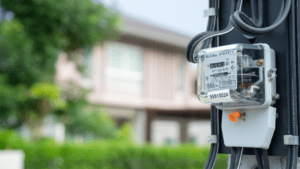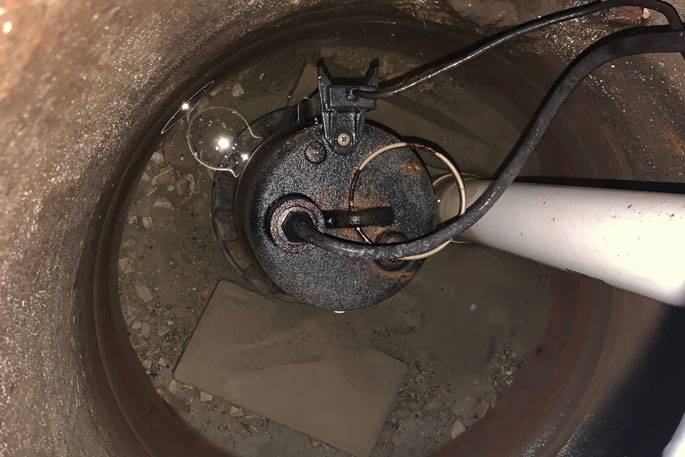
Ejector pumps, including sewage ejector pumps and sewage pumps, play a crucial role in maintaining a healthy plumbing system, especially in homes with basements. This guide will provide you with a comprehensive overview of how to replace an ejector pump, be it a sewage ejector pump or any other type. We’ll also explore why enlisting the expertise of a professional plumber from DrainGo for sewage ejector pump installation is a wise choice.
Understanding Your Home’s Sewage System Components
Maintaining your home’s sewage system is crucial, and this involves various components, including the basement floor, pump basin, float switch, sump pumps, sewer gas, sump basin, vent pipe, sewer gases, sewer system, main sewage line, and septic system. The basement floor serves as the foundation for your plumbing infrastructure, often housing the essential pump basin and float switch that power your sump pumps. These pumps, in turn, safeguard your basement from flooding. While doing so, it’s essential to be mindful of sewer gas and its potential risks, ensuring proper ventilation through the vent pipe. Understanding the intricacies of your sewer system, including the main sewage line, is essential for efficient wastewater disposal. For those in areas without municipal sewage, septic systems provide a reliable alternative. A comprehensive understanding of these components is vital for homeowners to ensure the smooth operation of their sewage systems.
If you’re considering replacing an ejector pump yourself, follow these steps:
Before starting, ensure you have the required tools and materials ready:
Ejector pump
Pipe wrench
Screwdriver
PVC pipe and fittings
Safety goggles and gloves

To ensure a safe ejector pump replacement process, it’s imperative to prioritize safety from the outset. Begin by turning off the power supply to the ejector pump to prevent any electrical accidents during the procedure. Additionally, make sure to shut off the water supply to your plumbing system to minimize the risk of water spillage or damage to components.
Remove the Old Pump with Caution
When it comes to removing the old ejector pump, exercise extreme care and follow these precautions. Disconnect the old pump from its power source, ensuring complete isolation from electricity. Handle the removal process with care to avoid any potential water spillage, as this could create a mess and pose safety hazards.
Precisely Install the New Ejector Pump
For a successful ejector pump replacement, securely installing the new unit is essential. Follow the manufacturer’s detailed instructions for proper alignment and sealing, ensuring that the new pump fits seamlessly into the designated pit. This step is critical to guarantee the efficient and trouble-free operation of your ejector pump system.
Seamless Pipe Connection for Watertight Results
As you progress with the replacement, pay close attention to connecting the PVC pipes and fittings. Ensuring that all connections are watertight is paramount to preventing leaks and maintaining the integrity of your plumbing system. Take your time to align and secure the pipes correctly, as this contributes significantly to the long-term performance of the ejector pump.
Thoroughly Test the System for Functionality
To conclude the replacement process, it’s essential to test the system thoroughly. Switch on the power supply to the new ejector pump and restore the water supply to your plumbing system. This step allows you to evaluate the system’s functionality, ensuring that it operates as intended. By rigorously testing the system, you can identify and address any potential issues early, guaranteeing its reliability and efficiency.
Feel free to incorporate these expanded sections into your content, and if you have any further requests or modifications, please let me know.
Water Level: Ensuring Precise Installation for Your Ejector Pump
Achieving the right water level within your ejector pump basin is a critical aspect of the installation process. It’s crucial to enlist the services of a qualified plumber who possesses the necessary equipment and expertise. The plumber will ensure that the water level is at a certain height, which is essential for the proper functioning of your ejector pump. This height is determined based on the specifics of your installation and the space available within the basin. The plumber will use specialized equipment to drill any necessary holes in the basin or concrete to accommodate the pump and maintain the desired water level. Once installed, a secure cover is placed over the basin, ensuring the safety and efficiency of your ejector pump system.
Feel free to incorporate this into your content, and let me know if you need further assistance or modifications.

While DIY can be a tempting option, there are compelling reasons to entrust your ejector pump replacement to DrainGo professionals:
DrainGo professionals possess extensive experience and the expertise needed for flawless ejector pump replacements, whether it’s a sewage ejector pump or any other type. They have encountered a wide range of scenarios and can handle any complications that may arise during the process.
DIY projects can be time-consuming, especially if you lack plumbing expertise. DrainGo professionals work efficiently, ensuring your plumbing system is up and running without unnecessary delays.
DrainGo stands behind the quality of their work. You can have confidence that your ejector pump replacement will meet the highest standards, ensuring long-lasting performance and peace of mind.
While DIY may seem cost-effective initially, mistakes can lead to costly repairs down the line. DrainGo offers competitive pricing that provides excellent value for the quality of service they deliver.
Basements are often the location of the ejector pump, where wastewater from various sources, including laundry rooms and basement bathrooms, is collected. Proper installation and maintenance of the ejector pump in the basement are crucial to prevent issues with wastewater backup.
Existing Sewage Pump: Maintaining Efficiency and Reliability
An existing sewage ejector pump is a vital component of your plumbing system that manages the efficient disposal of wastewater from your home. This pump is already installed and in operation, typically located in the basement or a lower level of your property. Over time, these pumps can wear down or experience issues, necessitating maintenance or replacement to ensure the continued smooth flow of sewage and wastewater away from your home. Properly maintaining your existing sewage ejector pump is essential to prevent potential plumbing problems and to ensure that your wastewater is safely and efficiently transported to the appropriate sewage system.
In conclusion, knowing how to replace an ejector pump, whether it’s a sewage ejector pump or another type, is valuable information. However, when it comes to the safety and efficiency of your plumbing system, entrusting DrainGo professionals for sewage ejector pump installation is the wisest choice. Their expertise, efficiency, and commitment to quality make them the go-to option for ejector pump replacements. Don’t take chances with your plumbing; rely on DrainGo for reliable and professional service.
Note: The information provided in this article is based on web research from various sources. For specific plumbing issues or concerns, it’s always recommended to consult a professional plumber.